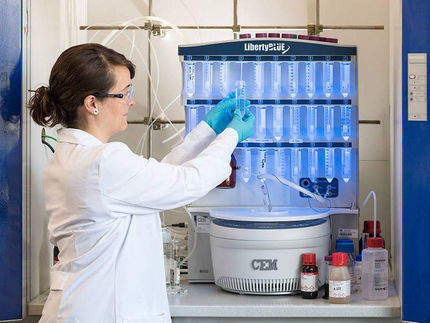Mimicking life: a breakthrough in non-living materials
Researchers have discovered a new process that uses fuel to control non-living materials, similar to what living cells do
Advertisement
The reaction cycle can easily be applied to a wide range of materials and its rate can be controlled – a breakthrough in the emerging field of such reactions. The discovery is a step towards soft robotics; soft machines that can sense what is happening in their environment and respond accordingly. The chemists published their findings in Nature Communications last month.

Time-lapse photo series of a hydrogel with fuel added (middle row) compared with a control hydrogel to which nothing has been added (top row), over a three-week period (504 hours). The bottom row shows a hydrogel that changes shape independently when two different types of fuel are added.
TU Delft
Chemist Rienk Eelkema and his group try to mimic nature, specifically the chemical reactions in living cells that provide the fuel to control the cell. The toolbox of reactions that drive non-living materials in the same way is limited, Eelkema explains. “Up to now, there are only about five types of reactions that are widely used by researchers. Those reactions have two major drawbacks: their rate is difficult to control and they only work on a specific set of molecules.” Eelkema and PhD candidate Benjamin Klemm, lead author of the publication, found a new type of reaction whose rate can be effectively controlled and which also works on a wide range of materials.
Swelling gel
“The essence of the reaction cycle is that it can switch between an uncharged and a charged particle by adding a chemical fuel to it,” Eelkema explains. “This allows us to charge materials and thus modify the structures of those materials, because equal charges repel each other and different charges attract each other. The type and amount of fuel determines the reaction rate, and therefore how long a charge and thus a given structure exists.” The researchers used their reaction cycle to charge a hydrogel, for example, after which the charges repelled each other and the gel began to swell.
Soft robots
The cycle of chemical reactions could be useful for building soft robots: little devices that are physically soft, like our skin and tissues, and can perform specific functions. “Soft robots do already exist, for example microparticles controlled externally through magnetic or electric fields. But ultimately you’d want a robot to be able to control itself: to see for itself where it is and what is happening and then respond accordingly,” says Eelkema. “You can program our cycle into a particle in advance, then leave it alone, and it performs its function independently as soon as it encounters a signal to do so.”
Eelkema’s next step is to link the process to the environment by adding signal processing to it: “For example, a polymer particle could contain some components of such a cycle. When it encounters the last part of the reaction, the cycle is completed, serving as a signal to disintegrate or swell up, for example.”
The definition of life
Cells of humans or other organisms need energy for a variety of functions: to move, to sense that something is happening or to divide. “This is also the reason why we humans need to eat,” Eelkema explains. “That linking of energy to function takes place through chemical reactions and is what defines living beings. It enables cells to control when and where structures are formed or processes take place, locally and for a limited time.”
In contrast, non-living materials can exist forever and function without an energy supply. Until a decade ago, there were no processes that could use a chemical fuel to drive interactions in non-living materials. Eelkema: “We introduced that here in Delft, along with a few other places, and since then the field has exploded.”




























































